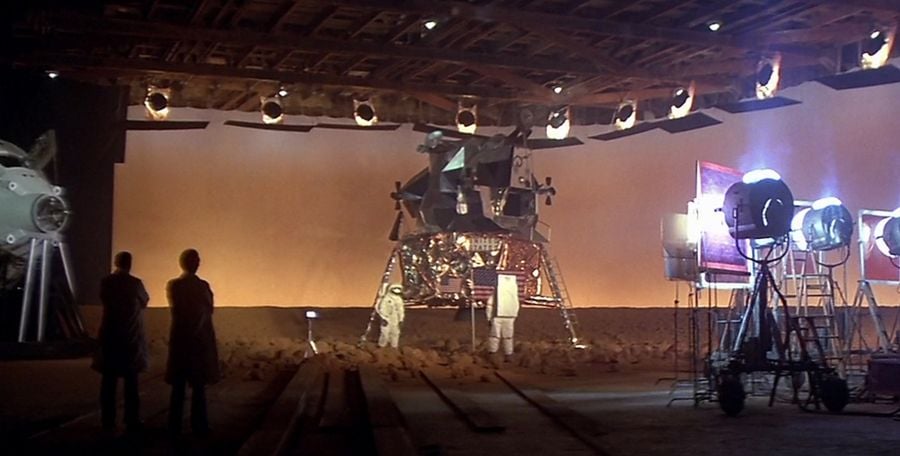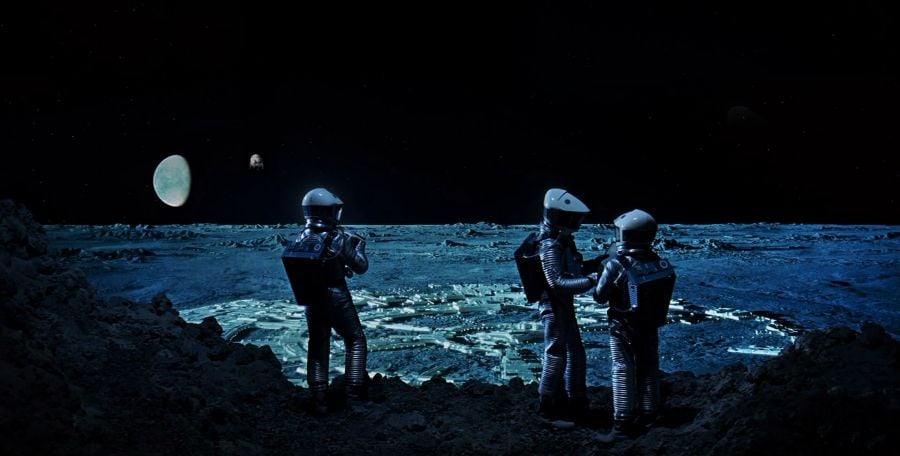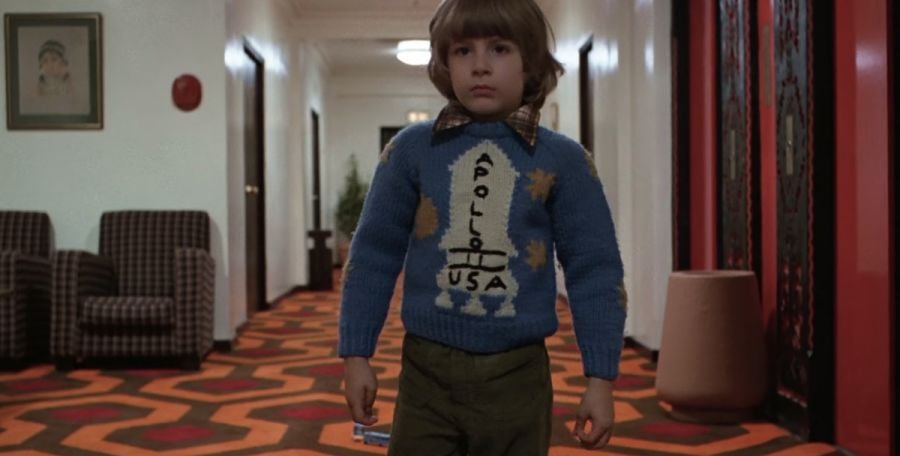Stanley Kubrick, 'The Shining', and the moon landing conspiracy theory
Conspiracy theories about the moon landing have been around for as long as the event itself.
Almost as soon as it occurred, hoaxes concerning the moon landing had made their way into popular culture. 'Diamonds Are Forever', released just two years after the moon landing, featured a sly joke which saw Bond stealing a moon buggy to make his escape. What really fired up the conspiracy theories concerning the moon landing was Peter Hyams' 1978 paranoia-laced thriller, 'Capricorn One'.
The movie starred OJ Simpson, James Brolin and Sam Waterston as three astronauts who were originally intended to be the first men to walk on the surface of Mars. However, due to faulty equipment, NASA instead opts to fake the event using a fake set in a base in the desert. Hyams' initial thinking on the project came from the fact that the only verification, at the time, was simply television footage.
In an interview with Empire Magazine in 2014, Hyams elaborated his thinking. "Whenever there was something on the news about a space shuttle, they would cut to a studio in St. Louis where there was a simulation of what was going on. I grew up in the generation where my parents basically believed if it was in the newspaper it was true. That turned out to be bullshit. My generation was brought up to believe television was true, and that was bullshit too. So I was watching these simulations and I wondered what would happen if someone faked a whole story."

Despite the fact that Capricorn One portrayed NASA in a negative light, the agency actually loaned producers some of their equipment - including a prototype of the lunar module that landed on the moon.
While 'Capricorn One' was a Hollywood thriller story of a faked space mission, conspiracy theorists persisted with their beliefs on the moon landing. What's more, they had a suspect in Hollywood who helped NASA to do it.
None other than Stanley Kubrick, director of '2001: A Space Odyssey'.
A significant portion of the movie takes place on the surface of the moon, where astronauts discover a black monolith that holds the key to mankind's evolution. While working on '2001: A Space Odyssey', the theory claims that Kubrick was contacted by NASA and was ordered to help them fake the landings of Apollo 11 and Apollo 12. What's more, Kubrick's knowledge and understanding of front-projection techniques was the key to making the footage seem believable.
Of course, the reality is that Kubrick's vision of the moon had no basis in reality. For example, '2001: A Space Odyssey' shows the astronauts walking across the surface with no buoyancy whatsoever. The moon has only a sixth of the gravity that Earth does. Furthermore, dust billows up when one of the spacecrafts lands on the moon, something that is physically impossible in reality.

In order to achieve the sense of scale needed for the moon, Kubrick employed front-projection which places actors in the foreground with pre-filmed footage in the background to create the illusion of scale and space. The technique was also used in the Dawn of Man sequence at the beginning of the movie.
Still, the hoax persisted and was only compounded by Stanley Kubrick's 'The Shining', released 11 years after the first landing on the moon. In that movie, Danny Torrance - played by child actor Danny Lloyd - is seen wearing a knitted jumper with an Apollo 11 rocket on its front. In the scene where Danny first encounters Room 237, he is seen playing on carpet that it is said to resemble an aerial photograph of the launchpad of Apollo 11.
When Danny picks up the tennis ball, which is supposed to represent the hoax itself, he then enters Room 237 and comes out of it attacked and bruised. Later, in the climax of the movie, Jack Torrance - played by Jack Nicholson - screams and raves about the responsibility that's been placed on him, and that he has signed a contract to maintain the hotel and that he is responsible for holding its secrets.
The interpretation asserts that 'The Shining' was, in part, Kubrick trying to confess his role in the moon landing, from the carpets up to Jack Nicholson's crazed rants acting as Kubrick's vented frustrations. Jay Weidner, an author and independent filmmaker, put forward this theory in the documentary, 'Room 237', which was itself an examination of the different interpretations on 'The Shining'.
Of course, the reality of the situation is decidedly different. The truth is that the jumper was merely chosen because it looked handmade. In an interview with the New York Times in 2013, Leon Vitali - Kubrick's longtime PA - explained the decision. "Stanley wanted something that looked handmade, and Milena (Canonero, the costume designer on 'The Shining') arrived on the set one day and said, ‘How about this?’ It was just the sort of thing that a kid that age would have liked."

The jumper, worn by Danny Lloyd, was knitted by a friend of costume designer Milena Canonero and was brought to set after previous jumpers did not appear to be age-appropriate.
As for the pattern on the carpet, a handful of explanations have been offered by an article on the specialist website, Film and Furniture. One theory is that the pattern itself was more conducive to creating a one-point perspective frame, something that Kubrick did repeatedly in his movies. The patterns, according to the article, create a lengthening effect and gives it a more dramatic shape.
Another theory is that the carpet is in the shape of a hexagon, or a hex - meaning an evil curse. Further more, a hexagon has six sides and Danny has a sixth sense that allows him to see ghosts everywhere.
While the reasoning behind the selection of carpet hasn't yet been discovered, the likelihood is that it simply served a purpose on the day and had less meaning than people give it credit. As is often the case with much of Kubrick's work, higher meaning is inferred when it's often not the case.
Ultimately, there is five decades of concrete, indisputable evidence that Neil Armstrong and Buzz Aldrin landed on the moon on July 20th, 1969 and that no such faked moon landing - with Stanley Kubrick's help or not - ever took place.

